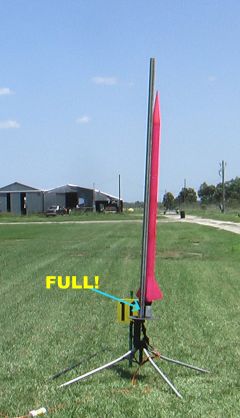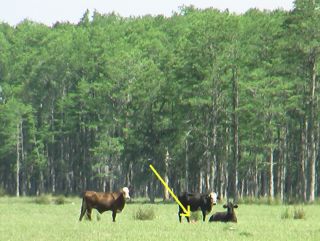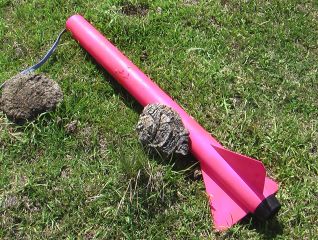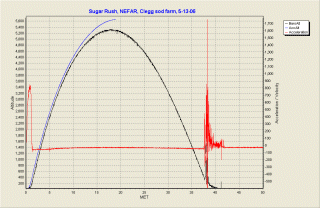
Sometimes you gotta chuck the rules.
The Space Shuttle uses liquid for damping sound and making steam, so why not me!
The motor is loaded with 4 propellant grains of Pixy Stix propellant, total propellant mass is 762 grams.
But there is a fifth grain, an un-cored end-burner which is intended primarily to provide smoke after thrust ends. It is also KN/sucrose with a little bit of Ti and red iron oxide to help it keep burning when the propellant grains are spent. I assume that the first web-thickness of this grain will burn along with the propellant, adding 39 grams to the total propellant mass.
Ignitor is bridge wire wrapped with fuse paper, with a touch of black powder and Ti inside. BP to make sure it fires, Ti for more sparkly heat.
Launch weightt: 9.75 lbs
Anticipated thrust: 960Ns
Burntime: 1.4 seconds
Altitude at apogee: Different sims give different numbers, the lowest being 4800 feet, the highest 6000. I'm guessing it will be somewhere in between.



